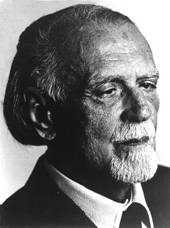

Zoltán Kodály
Hungarian Folk Music
Short instrumentation: 3 3 3 3 - 4 3 3 1 - timp, perc(5), hp, cimb, str
Duration: 40'
Übersetzer: Michael Dimi Calvocoressi, Bence Szabolcsi, Elisabeth M. Lockwood, Emma Kodály, M. W. Pursey
Text von: Anonymus
Bearbeitung: Zoltán Kocsis
Instrumentation details:
1st flute
2nd flute
3rd flute (+picc)
1st oboe
2nd oboe
cor anglais
1st clarinet in Bb (+cl(A))
2nd clarinet in Bb (+cl(A))
3rd clarinet in A (+bass cl(Bb)
cl(Eb))
1st bassoon
2nd bassoon
contrabassoon
1st horn in F
2nd horn in F
3rd horn in F
4th horn in F
1st trumpet in C (+tpt(Bb))
2nd trumpet in C (+tpt(Bb))
3rd trumpet in C (+tpt(Bb))
1st trombone
2nd trombone
bass trombone
tuba
timpani
percussion(5)
harp
cimbalom
violin I
violin II
viola
violoncello
contrabass
Kodály - Ungarische Volksmusik for voice and orchestra
Translation, reprints and more

Zoltán Kodály
Kodály: Ungarische VolksmusikOrchestration: für Gesang und Orchester
Type: Studienpartitur (Sonderanfertigung)
Language: Ungarisch
Sample pages
Audio preview
Work introduction
Kocsis chose the 20 Hungarian Folk Songs from Zoltán Kodály’s piano arrangements in the collections he had recorded with peasants in Transylvania and other regions of Hungary at that time, together with his friend and companion Béla Bartók.
Kocsis was faithful to Kodály’s intentions when he orchestrated the latter’s arrangements, thereby bringing the folksongs closer to art song – concert music. 12 of the 20 songs are set for soprano and orchestra, while the remainder calls for a tenor. The two soloists provide contrast, as do the mood and duration of the individual songs; tragic ballades are followed by happy melodies, lasting between 44 seconds and 3 min. 30 sec.
Altogether, this is a composition for voices and orchestra which makes great musical and technical demands on both soloists. It would be difficult to use original peasant soloists in this version; the piece requires opera singers such as those who premiered them, conducted by Zoltán Kocsis himself.
As an hommage, Kocsis chose a folk song to close the work which Bartók had recorded in Transylvania in 1906.
